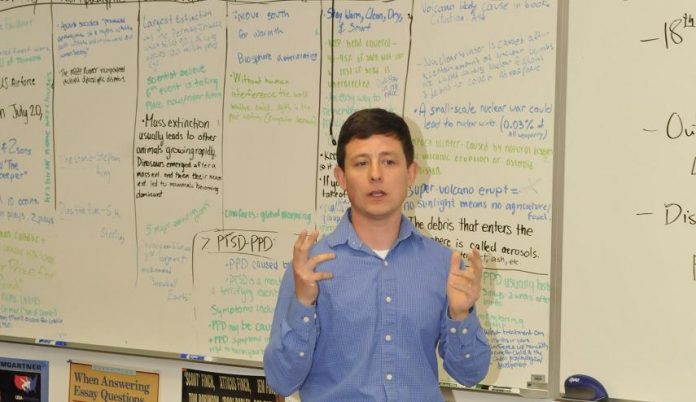This fall, Yavapai College will make a change to its dual enrollment offerings and begin charging high school juniors and seniors $10 for every credit hour in which they are enrolled — a move that will result in a $30 fee for the most common dual enrollment classes.
Dual enrollment classes offer upper-level high school students the opportunity to earn both high school and college credit. For the last 13 years, Yavapai College has offered dual enrollment classes for free, but, as interim Vice President of Instruction and Student Development Scott Farnsworth explained, this practice was in need of reevaluation.
“Over the last two years, we started looking at it more critically,” Farnsworth said. “The majority of community colleges in the state already charge tuition for dual enrollment classes.”
According to Farnsworth, an increasing number of Yavapai County high school principals and superintendents are seeking dual enrollment opportunities for their students, driving the cost to the college up.
An analysis of Yavapai College’s 2014-15 fiscal year revealed that it cost the college upwards of $300,000 annually to provide dual enrollment classes for free.
“As we’ve seen this grow, we were kind of feeling the pinch. We settled on $10 per credit hour,” Farnsworth said, adding that full tuition was considered but rejected when the college administration looked at how many students qualified for free and reduced lunches.
For such students and their families, full tuition would be too great a burden. Nonetheless, Farnsworth acknowledged that the change would not be met with enthusiasm from all — or even most — corners.
“Is there ever a good time to go from free to charging a fee?” Farnsworth asked. “Sooner or later, we’re going to have to pull the trigger.”
At the same time, Farnsworth made comparisons that he hopes will reveal how much of a value high school students are receiving by taking dual enrollment classes. An English class, at $30, is far from the full tuition of $225. The savings of the Fire Science offering, at $60, is even greater: Full tuition for that class is $900.
“But I fully understand it’s an adjustment,” Farnsworth said.
Sedona Red Rock High School Principal Darrin Karuzas agreed with the sentiment, saying, “We understand the need on their part, but we’d of course prefer our students not have to pay a fee.”
Mingus Union High School Superintendent Paul Tighe expressed concern about the new fees, stating, “Given that the direct expenses for dual enrollment classes are almost exclusively paid by the high schools, the costs identified by Yavapai College to justify these fees are for administrative and support services.”
Passing such expenses on to students, Tighe added, is difficult to support.
“The dual enrollment program gives high school students such great opportunities,” Tighe continued. “I am concerned that changing students fees will make it difficult for lower income students to participate, and consequently less students will matriculate in these courses. In order to maintain this opportunity for all students, school districts will ultimately be burdened with finding funding sources for these fees.”
According to Tighe, it is also not clear in what manner the fees will be administered.
“The costs of billing and collecting the fees would nearly equal the fees collected,” Tighe stated, adding that he fears the fees will increase annually.?



